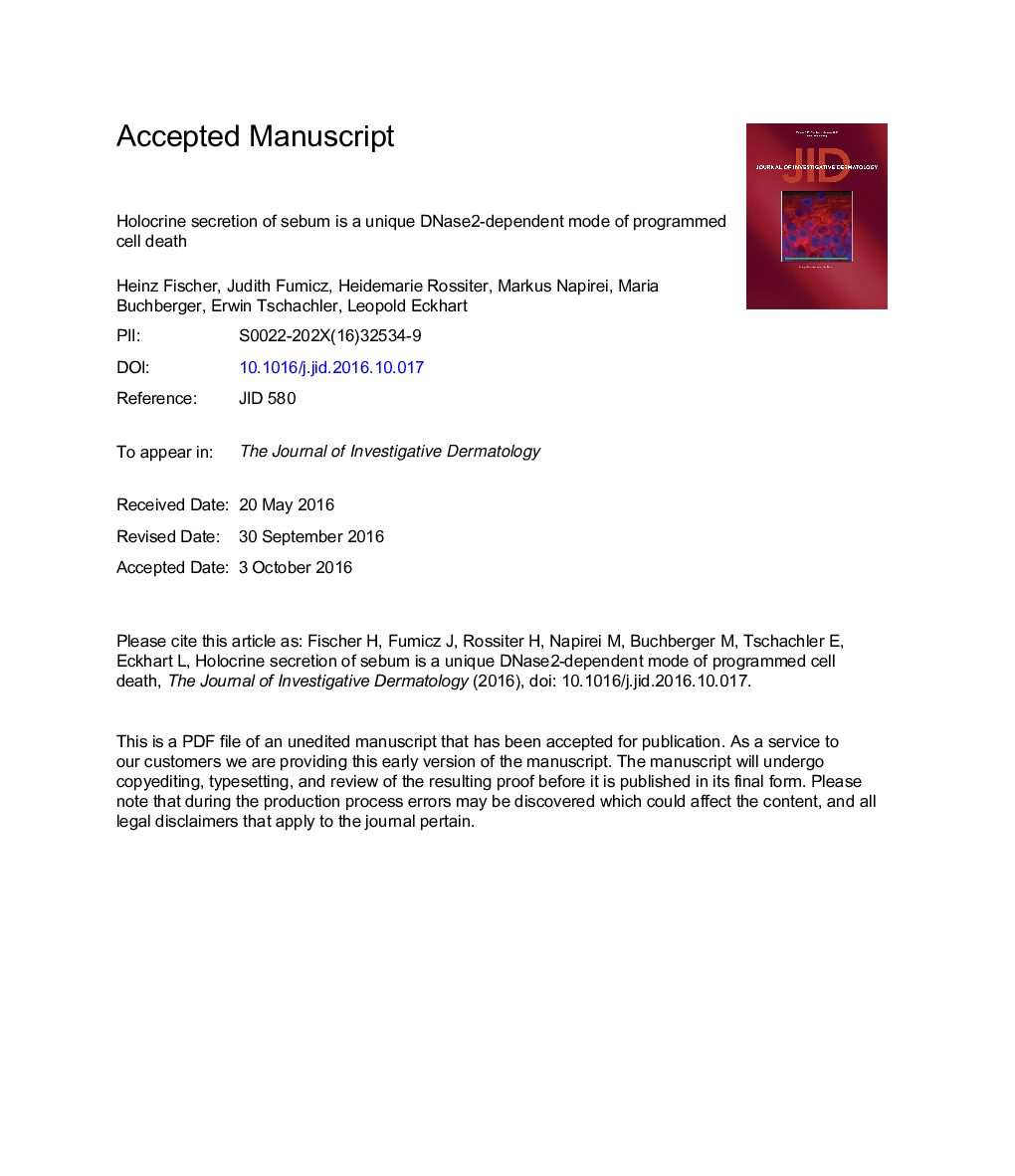| کد مقاله | کد نشریه | سال انتشار | مقاله انگلیسی | نسخه تمام متن |
|---|---|---|---|---|
| 5649733 | 1407130 | 2017 | 33 صفحه PDF | دانلود رایگان |
عنوان انگلیسی مقاله ISI
Holocrine Secretion of Sebum Is a Unique DNase2-Dependent Mode of Programmed Cell Death
دانلود مقاله + سفارش ترجمه
دانلود مقاله ISI انگلیسی
رایگان برای ایرانیان
کلمات کلیدی
موضوعات مرتبط
علوم پزشکی و سلامت
پزشکی و دندانپزشکی
امراض پوستی
پیش نمایش صفحه اول مقاله

چکیده انگلیسی
Sebaceous glands produce sebum via holocrine secretion, a largely uncharacterized mode of programmed cell death that contributes to the homeostasis and barrier function of the skin. To determine the mechanism of DNA degradation during sebocyte cell death, we have inactivated candidate DNA-degrading enzymes by targeted gene deletions in mice. DNase1 and DNase1-like 2 were dispensable for nuclear DNA degradation in sebocytes. By contrast, epithelial cell-specific deletion of lysosomal DNase2 blocked DNA degradation in these cells. DNA breakdown during sebocyte differentiation coincided with the loss of LAMP1 and was accelerated by the abrogation of autophagy, the central cellular program of lysosome-dependent catabolism. Suppression of DNA degradation by the deletion of DNase2 resulted in aberrantly increased concentrations of residual DNA and decreased amounts of the DNA metabolite uric acid in secreted sebum. These results define holocrine secretion as a DNase2-mediated form of programmed cell death and suggest that autophagy-dependent metabolism, DNA degradation, and the molecular composition of sebum are mechanistically linked.
ناشر
Database: Elsevier - ScienceDirect (ساینس دایرکت)
Journal: Journal of Investigative Dermatology - Volume 137, Issue 3, March 2017, Pages 587-594
Journal: Journal of Investigative Dermatology - Volume 137, Issue 3, March 2017, Pages 587-594
نویسندگان
Heinz Fischer, Judith Fumicz, Heidemarie Rossiter, Markus Napirei, Maria Buchberger, Erwin Tschachler, Leopold Eckhart,